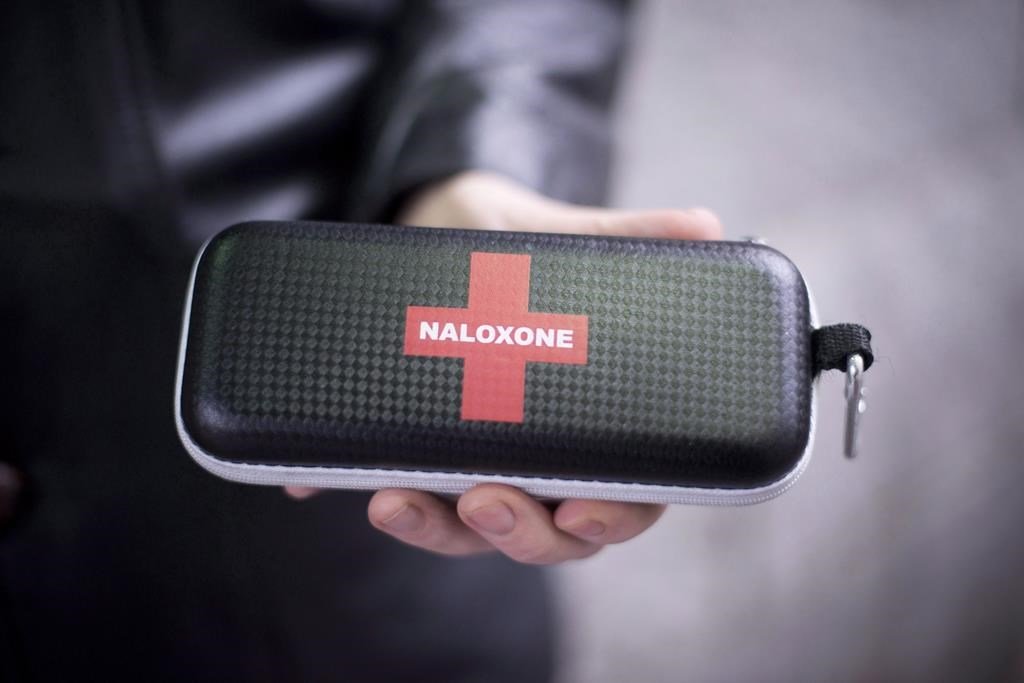Drug-poisoning deaths in Alberta have dropped nearly 40 per cent since 2023, according to data from the provincial government. But a deeper look is needed to understand the full picture, harm reduction advocates say.
Angie Staines, the founder of 4B Harm Reduction Society in Edmonton, said there is a significant divide in the quality of the drug supply across class lines. For middle-class drug users, particularly those who partake in weekend recreational use, overdose rates have decreased.
“I think that middle-class drug users, in my opinion, their drugs have improved, but for the majority of people we serve, it hasn’t,” said Staines, adding that recent tests on party drugs like cocaine and ecstasy have come back unlaced with other substances like fentanyl.
Staines added that party drugs are often used by those in the middle to upper-class, and aren’t used frequently by those living on the street.
But that shift hasn’t extended to supplies in the downtown core.
For the homeless and those struggling with long-term addiction, the supply has become increasingly dangerous, said Staines.
Substances like fentanyl and heroin — often referred to colloquially as “downs” — are now being contaminated with an even more dangerous mix of drugs, including veterinary-grade benzos, diabetic medications, blood thinners, acetaminophen and even animal dewormers, which can increase the risk of accidental overdose.
Fentanyl remains the most deadly substance on the market.
2:00
Police seize large amount of processed fentanyl from northern Alberta property
Although regular drug testing isn’t easily accessible on the streets, some have found fentanyl mixed with methamphetamine (meth).
Alberta has never paid for drug testing kits, Staines said, and community-led organizations like hers have had to pay out of pocket.
A statement from Hunter Baril, press secretary for the Alberta Ministry of Mental Health and Addictions, said that “even with testing, illicit or addictive drugs should never be considered safe as fentanyl is not the only substance that can lead to death.”
The ministry did not provide any insight into why deaths have been decreasing.
Meanwhile, the American company SwabTek is lobbying the Alberta government to use its field test kits to “combat the plague of opioid addiction,” according to a lobbying registration dated Feb. 3.
“Recent developments in Canada’s relationship with the U.S. have highlighted the urgent need to stop the flow of deadly, illegal drugs through our shared border,” said the registration.
Although drug testing can be one tool to help prevent overdoses or deaths due to drug toxicity, Staines said the use of naloxone kits is one measure that’s helped people stay alive.
Naloxone training is available in Alberta and is funded by both the province and the federal government.
Discrepancies in data
Euan Thomson, a Calgary-based researcher and advocate focused on addiction policy, says the fatality numbers may not be a perfect representation of the current situation.
One reason for fluctuating statistics can be traced to a backlog of medical examiner reports.
Sometimes they are released three to six months late, skewing the data from 10 to 30 per cent, said Thomson.
An annual report from the Alberta Ministry of Justice said the medical examiner only completed three per cent of cases every 60 days, significantly below its 2023-24 goal of 20 per cent.
The government has continually revised their past statistics, undermining confidence in their numbers.
In June 2022, the Government of Alberta released a statement saying there were 113 opioid-related deaths in April of that year. As of the time of publication, that number is at 121.
In September 2022, the province released a statement saying that there were 92 opioid-related deaths in the province during the month of July 2022. As of the time of publication, the data shows there were 101 opioid-related deaths that month.
Since the September statement was issued, the Ministry of Mental Health and Addictions stopped posting monthly updates on the number of opioid deaths.
1:44
Alberta records lowest single-month opioid death total in 4 years, critics question numbers
From January to October 2024, 964 opioid-related deaths were reported. There were 1,874 deaths in all of 2023.
Data from the Government of Canada says that opioid toxicity deaths nationally declined 11 per cent from January to June of 2023 compared to the same period in 2024. The report also says that 84 per cent of deaths from 2016 to 2024 occurred in British Columbia, Alberta and Ontario, despite the three provinces only making up 63 per cent of the total Canadian population.
According to the province’s data, B.C. saw a 13 per cent decrease in opioid-related deaths in 2024 compared to previous years.
“The toxic drug crisis continues to devastate families and communities in B.C., Canada and around the world,” said a statement from Minister of Health Josie Osborne. “While we are starting to see a decrease in toxic drug poisonings in 2024, the toxic drug supply remains one of the most serious threats to public health, affecting people from all walks of life.”
The coastal province has taken several measures to reduce the number of opioid related deaths, like increasing overdose prevention sites, the B.C. Centre for Disease Control’s Take Home Naloxone program which distributes naloxone kits throughout the province, and increasing drug testing sites.
1:38
Number of opioid-related deaths in Alberta reach lowest mark since March 2020
An emailed statement from the Ministry of Health said 54,700 deaths were prevented with the naloxone program, safe consumption sites and opioid agonist treatment like methadone clinics between January 2019 and October 2024.
But no one seems to know a definitive reason as to why the number of deaths has been in decline. Health Canada has said it’s normal to see dips in statistics, which could be attributed to fluctuations in the drug supply.
Vulnerable population disproportionately impacted
While data shows that deaths across Alberta have been on the decline, Edmonton is still a hotspot for high mortality rates, with homeless populations disproportionately affected.
A 2024 report from Homeward Trust, a non-profit housing organization, showed that over 4,500 people were living rough in Edmonton. Last year, the Edmonton Journal reported there were only 1,429 shelter spaces in the city.
25:05
Surviving Edmonton: 1 year spent with homeless people seeking stable housing
Homeward Trust previously counted shelter spaces on its website but was asked to take the numbers down by the Alberta government, as it planned to create a province-wide system for tracking shelter spaces. The now-live system shows 2,046 spaces available in Edmonton, with 93 per cent of them in use as of Feb. 5.
“The discrepancy is enormous,” said Thomson, adding that homeless “folks in Edmonton and Calgary are at potentially 200 to 1,000 times higher risk of death from drug poisoning than housed people.”
A path forward
Staines’ solution to the crisis calls for a fundamental shift in how addiction and harm reduction are approached.
She advocates for a rethinking of the drug supply itself, ensuring that people have access to trusted, clean substances that would remove the risk of overdose.
Allowing doctors to prescribe drugs that match the street supply, she argues, could prevent many fatalities and significantly reduce the toll of the crisis.
“The reality is, if we made sure that people were getting the type of drugs they need at that point, to make sure they’re not dying, then I think we would see a significant drop in mortality rates,” she said.
However, she said, a true solution requires building trust within the medical system and providing people with the time and space to heal without fear of being robbed or violated.
“We need to make sure people are supported and cared about,” said Staines. “In the end, one of the biggest things is connection. Once people start to have connections, I think things can change.”


